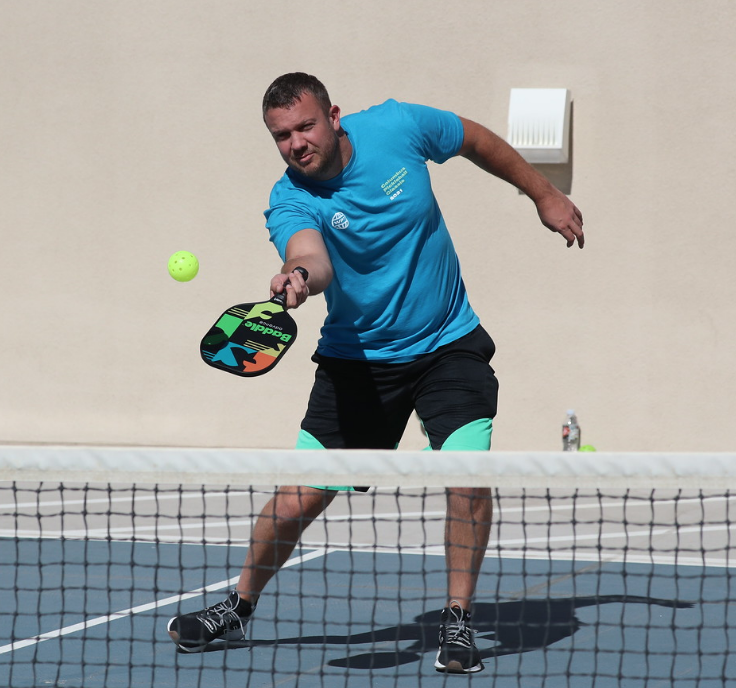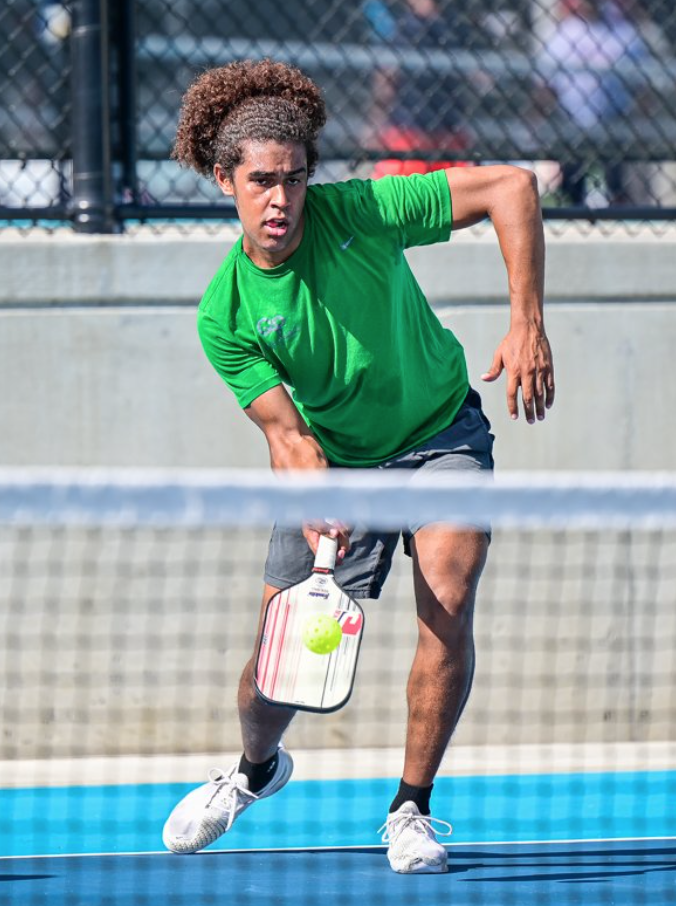The Best Drill To Improve Your Drop Shot In Pickleball
If you're like me, you've probably had a lot of trouble getting a consistent drop shot. Too much power and you get the ball spiked back at you. Too little and you don't even get it over the net. Finding the right consistency is something that takes time and practice to get right. Luckily, for this easy drill, all you need is a pickleball court, some gear, and a partner. And in no time, you'll be sending back a drop shot with ease.
What is the drop shot in Pickleball?
You may often hear about people talk about a third shot drop or just a drop shot in general and you may wonder what they're talking about. A drop shot is similar to a dink, but generally shot from further out. The main goal of the drop shot is to place the ball just over the net and into the non-volley zone, preventing your opponents from getting a quick attack on you.
This shot is a great way to reset the pace, slow the game down, and give you time to get back to the net if you find yourself in a tough position and backed up. In a game, you may often have to hit this shot three or more times in a row just to give yourself some time to get back to the net during a volley. This drill will make you a pro at this shot in no time.
Step 1: Get your dink down
What is a drop shot, if not just a very long dink. The goal of a drop shot is to get the ball to land in the non-volley zone, to avoid getting the ball smashed back at you. So it makes sense that the first thing to do is make the shot easier by shortening the distance. Once you master the shot at a shorter distance, you can start to get comfortable with it at even longer distances until you feel ready to use it in game.
Start at the line of the non-volley zone with a partner and have your partner hit the ball at you while you work on returning a dink to them in the non-volley zone. For now, this will probably just look like a dink rally. Keep doing this until you're comfortable with your dink.
If you want to become a master at dinking, you can take it even a step further and practice on placing your dink with excellent form. To do this, work on stepping to the ball and getting in the right position to return a dink. You want to step towards the ball and set your feet before hitting it to get maximum control over the ball. And remember to follow through on your swing to improve accuracy as well.
Step 2: Take a step back
Once you get your dink down, you can start to move back a bit and try to do the same thing, but from further out. Start by just taking one step back and then do the same thing. Have your partner stand at the top of the kitchen, hitting the ball to you and return the ball to them in the non-volley zone. Remember to keep it just above the net so that it lands softly in the kitchen and is difficult for your partner to return.
Practice hitting the ball back into the non-volley zone and have your partner return the ball to you at the new spot. Again keep doing this until you're comfortable with the shot from that distance. Once you feel comfortable from this spot, you can move on to step 3.
Step 3: Repeat
Now just do the same thing. Everytime you get comfortable at a new level, take a step back until you eventually reach the base line. Once you get comfortable with the shot from the base line, you've practically mastered the shot and you're ready to work it into your games.
For more practice, you can try to modify this drill a bit and work on accuracy. You can work on hitting the drop shot from the right side of the court into the left side of the opponents court or vice-versa. You can even try working on half the court to try and increase your accuracy. There's plenty of ways to tweak this easy drill to help you get the most out of it. And the best part is, even if you're advanced, you can keep using this drill to improve further or tweak it to get the most out of it.
When to use the drop shot
Now that you've mastered the drop shot, it's time to put it to use in a real game, but when should you use it? The drop shot is most on the third shot, after your opponent returns your serve deep into your side of the court. At this point, the drop shot is effective to give you time to move up to the net and get in an optimal position.
Once you hit the first drop shot, you may find that your opponent returned the ball before you could make it all the way to the net. Don't worry though, because this is where you can keep using drop shots until you make it back to the net. If they return the ball and you're not at the kitchen line yet, just use another drop shot and take a couple steps closer. Keep doing this until you're back in position in the game.
The main time that you'll use a drop shot in game is when you're backed up and need to get time to get back up to the kitchen line. Having a consistent and accurate drop shot can help you transition to the net faster and prevent the opponent from sending you shots that are hard to return.





